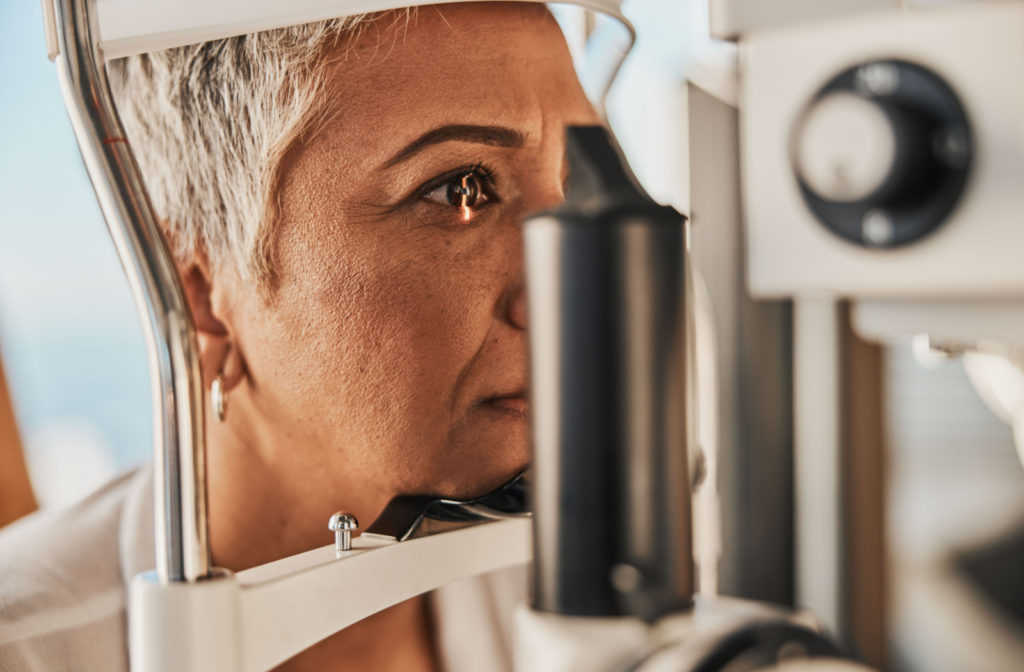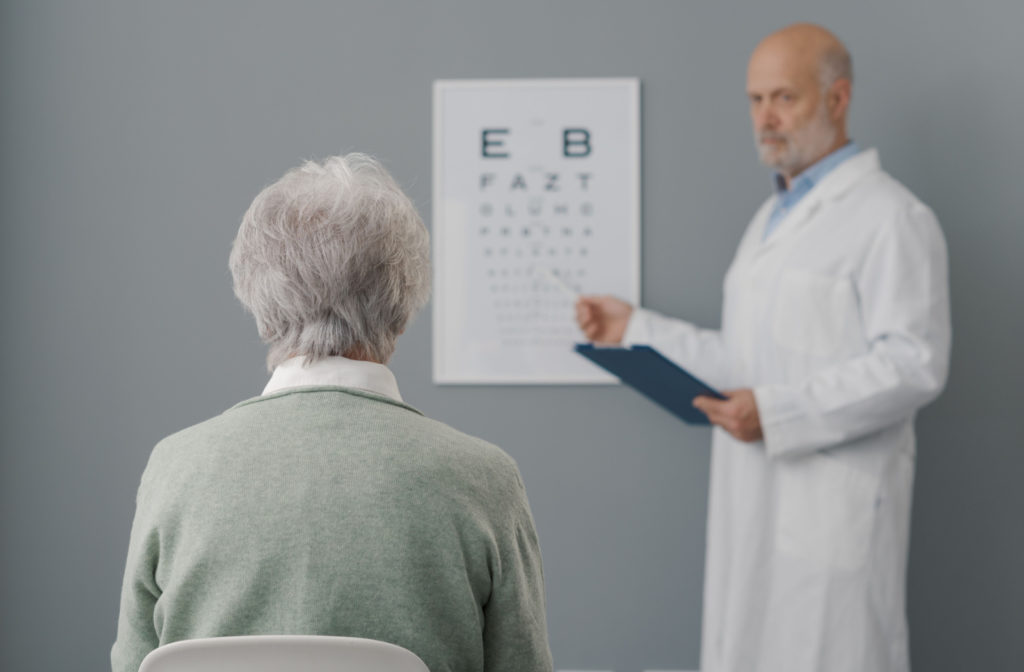Regular eye exams are essential for protecting your vision. These exams are more than a chance to test your sight—they help your eye doctor identify problems as early as possible. The technology used during your eye exam helps your optometrist notice the smallest changes in your eyes.
Your eye doctor can identify many conditions during your exam, including some you may not expect, like diabetes.
How Does Diabetes Affect Your Eyes?
Diabetes is a chronic health condition that can impact the entire body, including the eyes. This disease affects how the body processes insulin, causing it to struggle with regulating blood sugar.
When blood sugar stays too high for long periods, it can damage the blood vessels in the eyes. With time, damage to these blood vessels can increase your risk of several eye conditions, known as diabetic eye disease.
The Risks of Diabetic Eye Disease
Diabetic eye disease refers to conditions that affect the eyes, including diabetic retinopathy, diabetic macular edema, cataracts, and glaucoma.
If left untreated, diabetic eye disease can cause significant vision loss. With how these conditions can affect your vision, it’s essential to have them diagnosed and treated as early as possible.
Diabetic Retinopathy
Diabetic retinopathy can be a significant risk to your vision. This condition develops when high blood sugar levels damage blood vessels in the retina, causing them to leak fluid and blood. Over time, this damage can lead to severe vision loss.
The good news is that you can manage diabetic retinopathy with help from your optometrist. They can refer you for specialized medications or laser treatment to help protect your vision. Patients with diabetes should have regular eye exams to help identify this condition as early as possible.
While diabetic retinopathy may feel daunting, early intervention and management can help protect your vision and preserve your eyesight.
Diabetic Macular Edema
Diabetic macular edema is a complication of diabetic retinopathy. It causes swelling in the macula, the central area of the retina essential for clear vision.
Over time, high blood sugar can damage the blood vessels in the retina, causing them to leak fluid that accumulates in the macula. This build-up can lead to vision loss and even blindness if left untreated.
Like diabetic retinopathy, there are treatment options available to slow down this condition’s progression and manage symptoms. Regular eye exams and managing diabetes can help protect your vision and reduce the chance of further complications.
Glaucoma
Glaucoma is a common eye disease that can damage the optic nerve and lead to permanent vision loss. While anyone can develop glaucoma, people with diabetes are at a higher risk.
Glaucoma can lead to severe vision loss if left untreated, but many forms of this disease develop with limited symptoms. Regular eye exams are essential for diagnosing glaucoma as early as possible. After diagnosing this disease, your eye doctor can help protect your vision.
Depending on the type, your eye doctor may recommend different treatments to manage glaucoma. It’s important to catch this disease early and consistently follow up with eye exams to lower the risk of vision loss.
Cataracts
Cataracts are a common eye condition that affects millions of people every year. They occur when the natural lens in the eye becomes cloudy, making it difficult to see clearly. While anyone can develop cataracts, diabetes can increase the risk of developing them.
Luckily, cataracts can be managed through surgery, which involves removing the cloudy lens and replacing it with a clear artificial one.
Eye Exams Can Help Identify More Than You Think
Eye exams can help diagnose diabetes because of your optometrist’s detailed look at your eyes. Your eye exam includes an in-depth assessment of the eyes’ structures, including the retina, an essential part of the eye necessary for vision.
Diabetes damages the blood vessels in the eyes, and your optometrist can identify any slight changes to the eyes during your exam. They may even identify diabetes before a patient has been fully diagnosed.
Because diabetes can damage the blood vessels in the eye, it’s important to have regular eye exams to identify these changes as early as possible.

Protect Your Vision With Regular Eye Exams
Adults without diagnosed eye conditions should have an eye exam at least every 2 years. However, patients with diabetes should have an eye exam at least once per year. Your optometrist may even recommend more frequent exams than once a year—diabetes can increase the risk of vision-threatening conditions, making it important for regular examinations. You can help manage diabetes and diabetic eye disease with the help of your eye doctor. Contact Queensway Optometric Centre when it’s time for your next eye exam.


